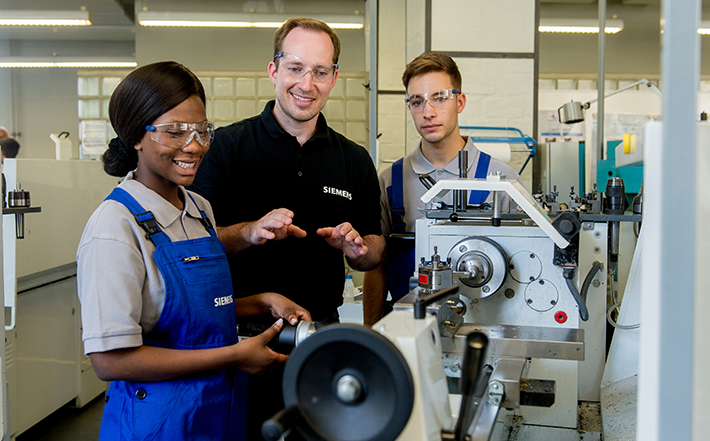
Youth Employment & Employability: Siemens Position on Education – global
The digital transformation provides chances and challenges at the same time. One of the challenges is how to build the appropriate skills the workforce of the future will need. Learning will have to become more interdisciplinary (across the value chain), more agile (responsive, inter-active, high-frequency), more virtual (e-learning) and more dual (work-based, embedded in the learner’s operational context) – dual vocational training will be one possible driver of change towards a digital economy.

Dual vocational education combines theory taught in a classroom with practical application experience in the workplace – it supports the transition from education to work, it delivers the skill sets needed in industry, and it provides young people with recognized and marketable certificates.
To avoid a job-less recovery of the economy, we need labor-market and education reforms, getting rid of rigidities, and increasing the employability of the young.
In fighting youth unemployment, more of the same education programs won’t do! Any line of education – including university courses – can be made more dual and, hence, more applied and effective.Siemens is convinced of the benefits of dual vocational training & apprenticeship schemes to companies, the society and the young: employability, employability and employability.
In Germany, we are one of the largest private vocational-education providers with a total of around 7,900 apprentices and over 100 years of experience. Each year Siemens receives around 40,000 applications and invests around 182 million Euros in youth education.
Globally, Siemens offers dual vocational education programs in various countries (beyond Germany), to approximately 3,000 apprentices. In some of these countries, governments have supported the ramp-up financially. We are committed to increase these global efforts.


